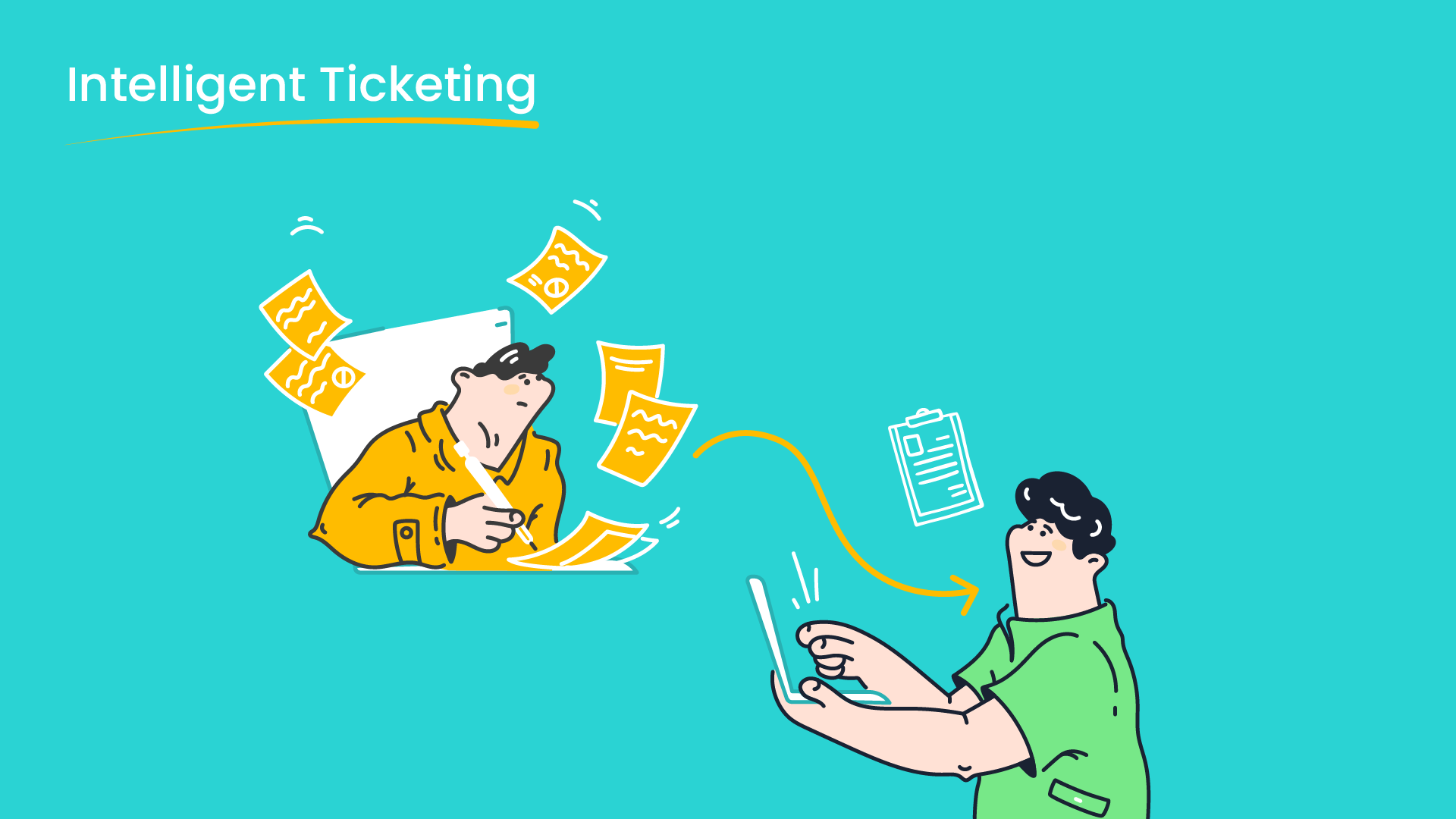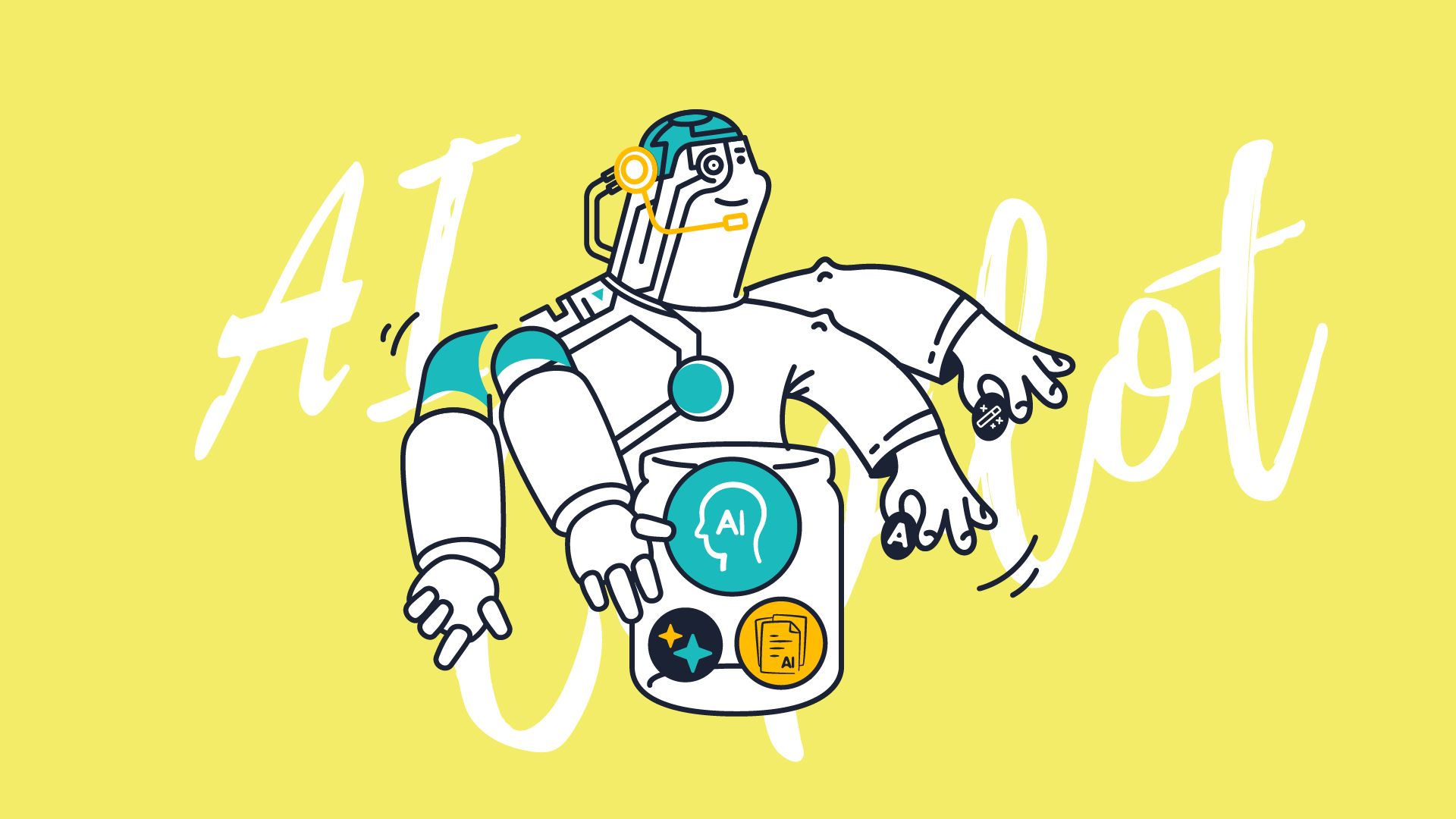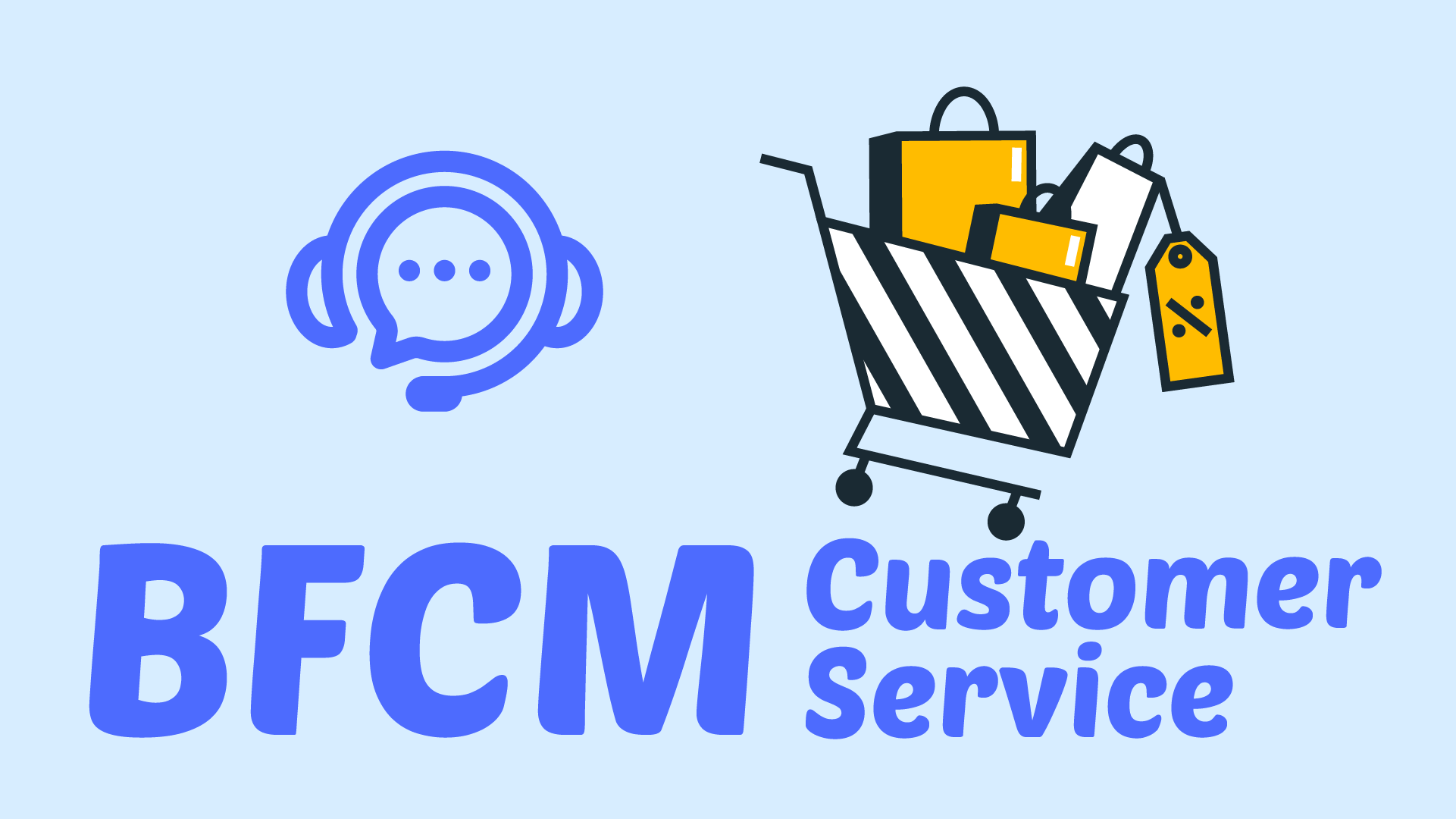In daily customer service, a ticketing system not only serves as a collaboration tool between agents and internal teams, but also is directly open to customers. Customer inquiry emails, online messages, and so on can all be transformed into tickets automatically and start internal workflows, which ensures that ticketing system can cover the full process of “reception – identification – flow – processing – feedback”.
As it involves several parts of the whole process, and plays an extremely important role in customer service, the ticketing system must accurately assess customer inquiries and perform the “correct flow” to ensure overall operational efficiency. And that’s where Sobot stands out.
Overview on Key Highlights of Sobot Ticketing System
There are 3 key factors that make Sobot’s ticketing system extraordinary: smart recognition, intelligent assistance and workload alleviation.
- Smart Recognition: For self-service inquiries (emails, messages, etc.) from customers in different countries, the system should be able to recognize the customer’s language to route tickets to the appropriate language-specific teams. It even needs to recognize customers’ sentiments to prioritize some of the tickets.
- Intelligent Assistance: When dealing with complex content or workflows, the system should be able to simplify the process, reducing customer service teams’ time and efforts in understanding, as well as giving feedbacks.
- Workload Alleviation: When frontline agents handle live inquiries, ticket creation should make agents’ work convenient enough—particularly during sudden spikes in inquiry volume—to avoid decrease in efficiency.
These tasks have traditionally been handled manually, but with Sobot’s upgraded AI-Copilot ticketing, they can all be managed by AI.
Smart Recognition: AI-powered Language and Emotion Recognition for Smarter Business Routing Globally
When real-time customer service is unavailable, customer messages and email inquiries are automatically converted into support tickets and routed to the appropriate team. To ensure accurate routing and efficient handling, businesses must quickly identify customers in advance. With Sobot’s AI-Copilot ticketing solution, conversations are automatically analyzed, enabling rapid recognition of both languages and emotions.
Smart Language Recognition
The AI ticketing first detects the language used by the customer and automatically tags it at the “language” field in the united system. Based on this tag, the ticket is routed to the corresponding language-specific support team for follow-up. When the customer returns in the future, the system will automatically apply the same language routing, helping eliminate internal reassignments caused by language mismatches, and streamlining the support workflow.
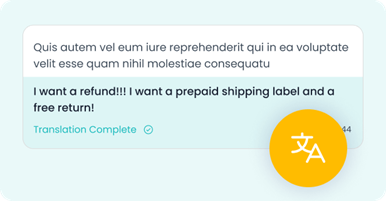
Smart Emotion Recognition
Regardless of the language used, the AI analyzes customers’ emotions in every inquiry. For instance, if a customer uses aggressive or offensive words, the conversation is labelled as having a “negative” sentiment. Such conversations are usually highly prioritized and escalated to the complaint resolution team in accordance with predefined rules. For routine messages, the system may label them as a standard priority level, allowing support teams to respond at a regular pace. This proactive approach enables businesses to identify critical issues early and reduce the negative impact of poor customer experiences.
Intelligent Assistance: One-Click Summarization + Expansion:No Wastage of Time on “Content”
For many businesses without agents, back-end teams typically take full responsibility for everything from customer reception to demand fulfillment. However, team members often spend excessive time on content comprehension and composition tasks – such as grasping customer intent, comprehending the context of events, and responding to customer feedbacks – thereby lacking the time of completing truly valuable tasks and leading to inefficiency.
Sobot’s AI-Copilot ticketing fully leverages AIGC technology to empower teams with “One-Click Summarization” and “One-Click Expansion”, freeing up most of their energy to focus exclusively on “problem-solving”.
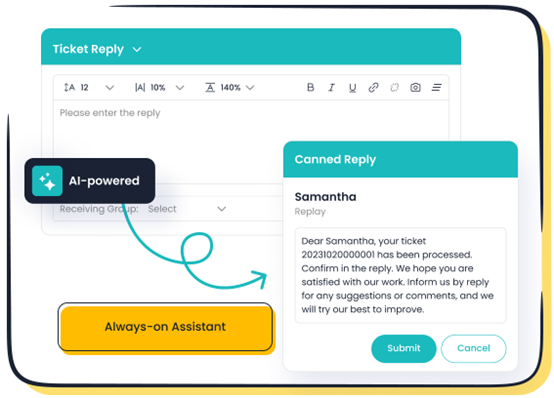
One-Click Summarization
When customer messages are lengthy or have been transferred to multiple teams before final processing, handlers need to quickly grasp the essentials of customer needs and event progression to make sound judgements. Through One-Click Summarization, AI condenses extensive text or prolonged transfer records into a concise paragraph summary. This enables handlers to rapidly comprehend the core of the event without reviewing all historical content.
One-Click Expansion
When a problem is solved, businesses often need to compose a logical and comprehensive feedback email to clearly explain the resolution result to enhance the customer experience. By applying “One-Click Expansion”, handlers simply need to outline key feedback points. AI will then automatically expand and polish the content into a ready- to-use reply message to the customer.
Workload Alleviation: AI-Copilot Information Summarizing & One-Click Ticket Creation
When frontline customer service agents handle real-time customer interactions, especially when making appointments of delivery, installation or repairing, they usually need to confirm massive information with customers and guide them for troubleshooting. And after conversations, agents will clarify complex information and fill it in tickets, which will be transferred to support teams for further processing. But during peak hours, such reception method is more error-prone with the surge in inquiry volumes, and may make agents more overwhelmed, resulting in excessive wait time and poor customer experiences.
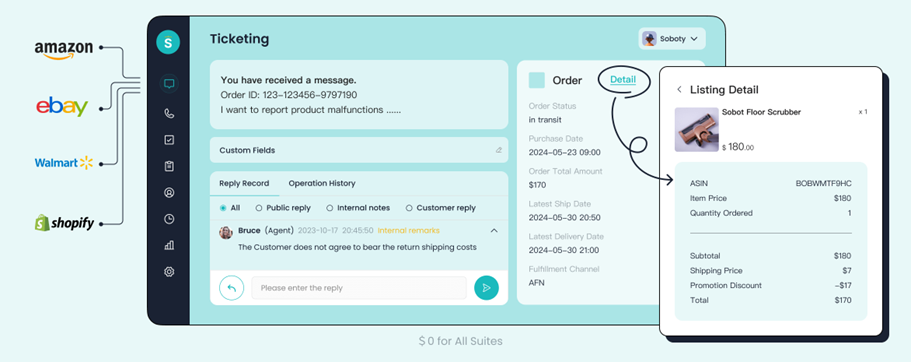
With the “One-Click Ticket Filling” feature, AI can extract needed information from the conversation based on the preset requirements, and fill in the ticket automatically. After a quick review, the agent can directly submit and transfer the ticket without manual input. This significantly reduces agents’ workload, enabling them to handle more inquiries.
Conclusion
This upgrading of the AI-Copilot ticketing delivers significant advancements across three core capabilities: smart recognition, intelligent assistance and workload alleviation. While presented through simple interface elements, these features unlock transformative potential.
This ticketing system upgrade represents a major progress of Sobot in intelligent customer service. It not only empowers AI to handle routine tasks but also delivers precise, efficient support to human agents—making customer contact more productive and humanized.
Also interested in improving your ticketing efficiency? Contact us to have a free trail now!
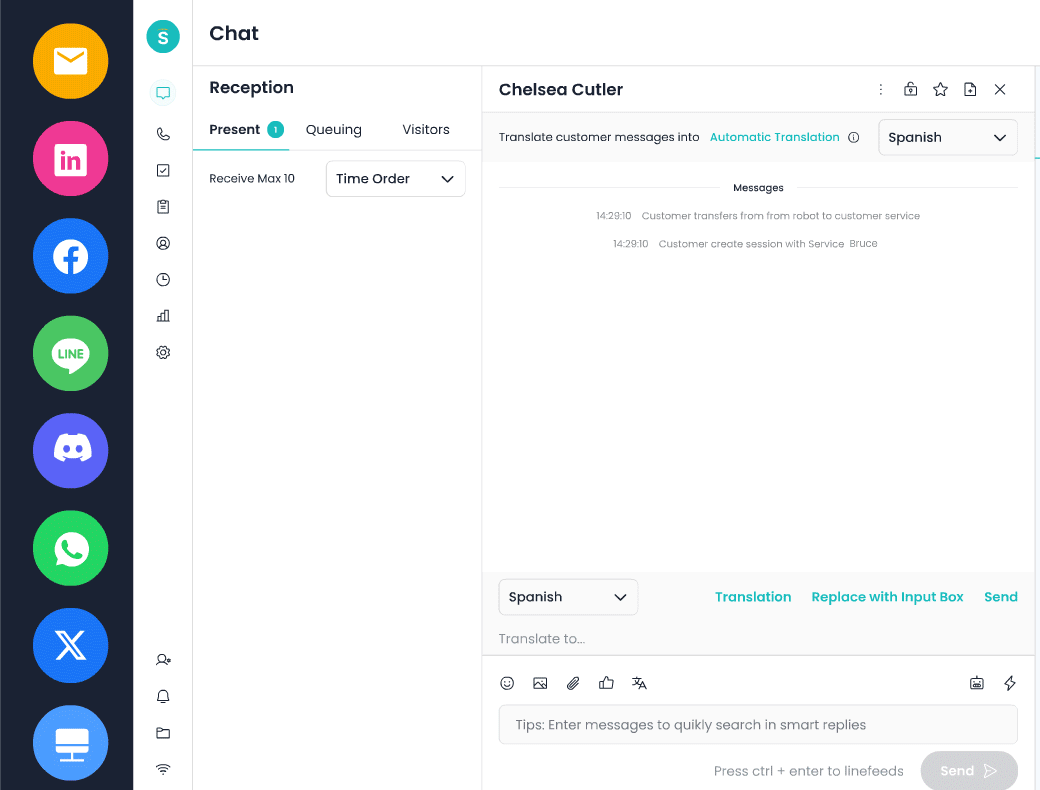
FAQs
Is Sobot Ticketing System supported by AI?
Yes. Your agents can easily create tickets in live chat or call center workbench, and fill in the ticket fields with AI assistance. When replying to tickets, agents are also powered by GPT to revise and polish their answers.
Which industries can benefit from Sobot Ticketing?
A variety of industries can benefit from Sobot Ticketing System for customer support, and here are some specific applications in various industries.
Retail : When customers contact agents through chat or email in e-commerce platforms like Amazon, Walmart and more, their messages can be transferred into Sobot Ticketing workbench in real time.
Finance : Sobot Ticketing System can automatically transfer the forms filled by customers into tickets. If agents encounter some tricky issues when receiving customers in live chat or voice, they can crate tickets to collaborate with senior financial planners or accountants for problem resolution.
Enterprise Service: Sobot Ticketing System supports to submit bug feedbacks and demands, assign engineers and facilitate more processes in enterprises.
And Sobot Ticketing System is far more than that. You can click on the online consultation in the lower right corner, through which we can learn about your businesses in detail and give you targeted advice.
How a ticketing system works?
This is a step-by-step overview of how a ticket works:
Ticket creation, ticket flow and assignment (categorize and prioritize tickets based on types and roles), ticket handling, ticket tracking and management (agents and administrators can check and learn about the handling process, and give appropriate feedback or interfere in time), ticket resolution and closure, reporting and analysis.
If a ticketing system is supported by AI, its efficiency can be improved greatly. For example, a ticketing bot can participate in the resolution of customer issues, assist agents, and provide response and suggestions.
